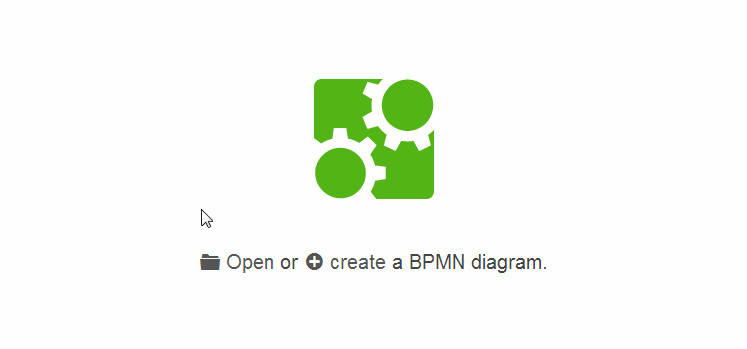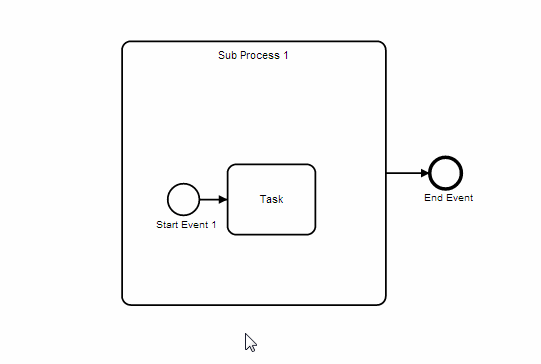We are happy to announce a new version of our BPMN toolkit. It allows you to create simple processes and export them as BPMN 2.0 XML. Furthermore it adds a context pad, improves the support for mobile devices through touch gesture support and has better rendering performance.
Todays release of bpmn-js brings us a big step closer to a bpmn.io process modeler. Using the library it is now possible to model simple processes, undo/redo the changes and export the resulting diagram as BPMN 2.0 XML. Modeling can be done by appending new process elements to existing ones via a simple context pad.
Checkout the modeling workflow below:

You may try out the feature by creating your own process on demo.bpmn.io.
The new version of bpmn-js is available via npm and bower.
Context pad
diagram-js, the underlying diagram toolkit received a context pad that allows users to carry out actions local to an element. These actions include appending other nodes (just shipped) or removing the current element (still to be implemented). The context pad is designed to be easily extended and bpmn-js builds its modeling actions on top of it.

Touch and smoother navigation
We added touch gesture support to the BPMN 2.0 toolkit that allows you to navigate through processes on your mobile devices.
As part of it we reworked the way we perform zooming and scrolling in diagrams. We now use svg transforms and matrix manipulation magic that can be optimized by browsers. This gives us noticable performance boosts on older browsers and mobile devices.
You may edit labels from your tablet or phone, too.
BPMN 2.0 manipulation (know your $parent)
bpmn-moddle is our in-memory BPMN 2.0 document representation.
It now exposes the parent element of a BPMN node via the $parent variable.
This comes handy for model inspection, traversal and manipulation.
One use case is removing a flow node from its parent process, effectively removing it from the BPMN 2.0 document.
<bpmn:definitions ...>
<bpmn:process id="process_1">
<bpmn:startEvent id="startEvent_1" />
<bpmn:task id="task_1" />
</bpmn:process>
</bpmn:definitions>Let us say we imported the above definitions and got hold on the task task_1.
var task; // task_1
var process = task.$parent;
var flowElements = process.get('flowElements');
flowElements; // [ startEvent_1, task_1 ]
// remove task
flowElements.splice(flowElements.indexOf(task), 1);After exporting the diagram again, the task got removed from the XML file:
<bpmn:definitions ...>
<bpmn:process id="process_1">
<bpmn:startEvent id="startEvent_1" />
</bpmn:process>
</bpmn:definitions>Final words
The release ships with many more under the hood improvements and bug fixes. To learn about everything that is inside have a look at the issues closed for bpmn-js, diagram-js as well as bpmn-moddle.
In the next milestone we plan to ship drag and drop of process elements along with other goodies. Stay updated on what we do via Mastodon.
For now, happy modeling on demo.bpmn.io.
Are you passionate about JavaScript, modeling, and the web?
Join Camunda and build modeling tools people 